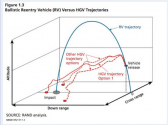Interestingly the cutting edge research in underwater detection also happens to be done by Chinese researchers.torpedos are actually very hard to intercept because they're very stealthy and the first warning of them is often your ship exploding.
You are using an out of date browser. It may not display this or other websites correctly.
You should upgrade or use an alternative browser.
You should upgrade or use an alternative browser.
China ICBM/SLBM, nuclear arms thread
- Thread starter Blitzo
- Start date
You mean this thing?Interestingly the cutting edge research in underwater detection also happens to be done by Chinese researchers.
A nuclear warhead exploding at ground level or shallow water will have a smaller area of effect. It's why they make them explode in altitude for the ground to amplify the shockwaves and destroy large area. It diminish nuclear waste on the site of impact too. Using a nuke at ground level is better to destroy an armored structure or underground facilities because in concentrate the energy in a smaller perimeter.Just to chip in a little.
2. Instead of detonating the warheads some distances away from the targeted coastal cities, these nuke-tipped torpedoes will swim right up to the targeted coastal city itself, sail into the large rivers and/or bay areas which criss-cross the target city itself and/or are located right next to the target city itself, position themselves along the large rivers and/or bay areas within the vicinity of the target city before detonating the warheads;
Nuclear torpedo of small yields are already fielded and are designed to be used against ships. The main purpose is to deny a fleet of ships with a single torpedo that would disable most without a direct hit. You can launch them against portual facilities most probably but if you put protecting nets you can catch it before it's too late and you need to come near the target risking detection.
The design of the Poseidon is more about the devastating effect on large area and because it's more or less impossible to counter. It's more about a doomsday/retaliation system.
Not just that, most of the published materials I've been searching online regarding the latest underwater detection research typically has Chinese researchers attached to it.You mean this thing?
SQUID is a really old thing. Same technology as all superconducting Quantum computer.You mean this thing?
Just like subsonic non-stealthy cruise missiles, contemporary submarine-launched torpedos (unless they are the air bubble-power ones that travel above 100 knots, (sorry I forgot the professional English term for 超空泡鱼雷)) that travel under 50 knots are extremely vulnerable to interception. That's why I think the PLAN's 055/052Ds' land attack missions would be carried out using YJ-21s instead of CJ-10s, while it is actively trying to copy and reverse engineer those Soviet-era air bubble-powered (somebody please help me with the professional name here) with more advanced electronics. The Ukraine War has shown how cruise missiles like Tomahawk and CJ-10 are becoming outdated in the face of highly-maneuverable SAMs. Thus, in order for nuclear deterrence to be effective, speed remains the key, so nuclear-tipped MARVs and hypersonic weapons would be the future based on my guess. In fact, even the non-MARV reentry vehicles (those that strictly follow a pre-determined ballistic track) on Minutemen-III, Trident II, DF-31s, RS-24 Yars, DF-41s will likely become obsolete as ABM technologies become smarter and more effective.
Also, is it realistic to put an AESA radar paired with plasma-ion engines on the warhead to enhance the warhead ability during mid and terminal phases?
Supercavitating torpedo
I had a conversation with an ex-Royal Navy officer about this on Quora a year ago. The real limitation is how slow the sound is. In seawater the speed of sound is around 1500 m/s. It means if your towed array detects a torpedo 14 km away there will be a period of more than 9 seconds between sound getting reflected/emitted from the torpedo and reaching the ship. If the torpedo was at 45 knots that means the torpedo has traveled 210 meters between signature generation and detection. This complicates things. Especially since it is almost impossible for a torpedo to detect another torpedo.torpedos are actually very hard to intercept because they're very stealthy and the first warning of them is often your ship exploding.
There were some reports suggesting that China has ~20 bombs. I guess these bombs, if they exist, are not usable by most aircraft. So the answer is no.I know this is slightly off topic, but I couldn't find another thread for this question. Does China possess such assets that can be delivered from J-20s or even J-10s?
Last edited:
i'm lolling that you're asking if china has and can drop dumb nuclear bombs when they have already combined FOBS with hypersonic glide vehicles. btw the US still is not a hypersonic power unlike Russia and China (though perhaps will be within a few years). Some have tried to muddy the waters by claiming ballistic missiles count (they don't, despite reaching those speeds). The modern hypersonic weapons do not follow a ballistic trajectory. It's that COMBINED with the speed that makes them so hard to stop. Ballistic trajectories are easy to predict. Intro college physics.I know this is slightly off topic, but I couldn't find another thread for this question. Does China possess such assets that can be delivered from J-20s or even J-10s?



Last edited:
